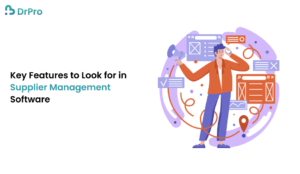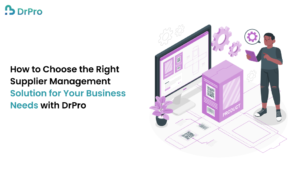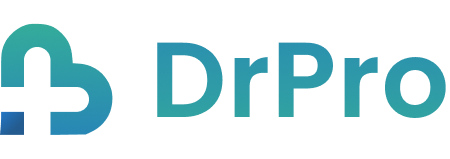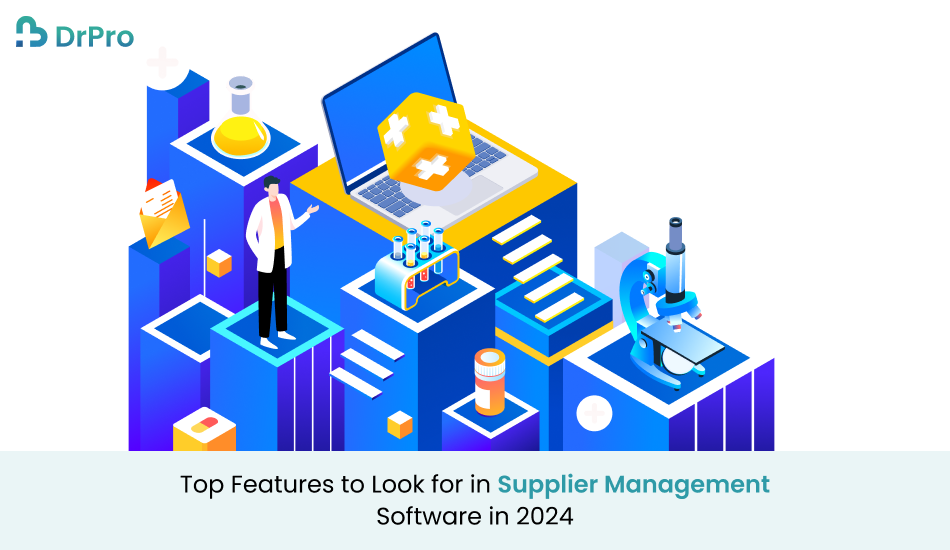Quick Summary
This is because as the size and forms of corporations change over time, so does the task of handling and selecting suppliers. Today, supplier management software is viewed as crucial to drive most organizations and boost their efficiency and collaboration. This article overviews what supplier management software should look like in 2024, how beneficial it could be for your business, and how to find the most suitable software for your company’s needs.
Introduction
This paper seeks to discuss the impacts of supplier management in the competitive business environment especially in the modern world. Supplier management is a tool that offers solutions for managing all aspects of relationships between the company and multiple suppliers. These solutions help an organization address complex issues based on automated solutions instead of spending time and effort on routine activities. With the changing period, the need for a new supplier management system is present, and it has led to businesses analyzing all the available choices more closely as we move into the year 2024. This article describes characteristic features to be taken into account while choosing supplier management software and presents the advantages of such systems.
What is Supplier Management Software?
Supplier management software is a systematic that has been developed to assist organizations manage Suppliers & Their Relationships. This type of software helps out in different tasks such as supplier management, supplier performance evaluation, contract management, and regulation compliance. Supplier management software allays the integration of modules, distributes responsibilities, and optimizes supplier relations hence improving its performance and use by various departments.
What Are the Benefits of a Supplier Management Solution?
Implementing a supplier management solution offers several advantages, including:
Enhanced Efficiency:
Outsourcing of recurrent activities discourages wastage of time and minimizes the possibility of mistakes. This efficiency also frees up the time to be used on other more strategic activities by the teams.
Improved Collaboration:
One more benefit A centralized platform provides improved communication channels with suppliers and all internal teams improving collaboration and partnership.
Increased Visibility:
Supplier management software enables organizations to assess the suppliers’ performance in real-time, and therefore eliminate assumptions about suppliers.
Risk Mitigation:
Whenever the data of the supplier are full, analyzing the risks, and the ways to solve the potential disruptions of the supply chain is easier.
Cost Savings:
His paper explores how savings can be achieved through efficiency gains and enhancing the efficiency and productivity of suppliers.
Compliance Management:
Supplier management application assists an organization in ensuring that its supplier conforms to the correct legislation and industry standards to eliminate risks of fines for non-compliance.
Better Decision-Making:
It allows organizations to make the right decisions and identify the right suppliers, evaluate their performance, and understand risks.
Key Features to Look for in Supplier Management Software

When selecting supplier management software for your organization, it’s essential to consider the following features:
1. Supplier Onboarding and Management
An ideal solution for supplier management should enable a company to easily onboard suppliers to its system, within the shortest time possible. Look for software that offers:
- Standardized newcomer experience
- Completed forms that have generic fields for supplier data.
- Electronically signing of contracts and agreements
- Organization management tools for retaining important supplier documents
2. Performance Tracking and Analytics
However, there must be sound performance tracking and analysis tools in the supplier management software that can give an effective evaluation of the suppliers’ performance. This may involve:
- Key Performance Indicators (KPIs) for assessing supplier performance
- Automated performance scorecards and dashboards
- Reporting tools for generating insights into supplier performance trends
- Benchmarking against industry standards
3. Contract Management
Subsequently, great contract management is vital to retain and enforce compliance with terms and conditions to achieve suppliers’ contractual commitments. Key features to look for include:
- Centralized contract repository for easy access
- Automated alerts for contract renewals and expirations
- Version control to track changes and updates
- Integration with e-signature tools for efficient contract execution
4. Risk Assessment and Management
Supplier risks are critical issues that need to be assessed if there has to be a sustainable supply chain. Supplier management software should provide:
- Risk assessment tools for evaluating potential supplier risks
- Real-time alerts for compliance violations or performance issues
- Historical performance data to identify potential risk patterns
- Scenario analysis tools to evaluate the impact of potential risks
5. Communication and Collaboration Tools
It is critical to communicate with the suppliers for the management of these relationships. Look for software that includes:
- Built-in messaging and communication channels
- Collaboration tools for sharing documents and information
- Integration with email and other communication platforms
- User roles and permissions to control access to sensitive information
6. Compliance and Regulatory Management
One of the most important issues for any company is to obey all the requirements of the given industry; otherwise, sanctions and a bad reputation are likely to occur. Your supplier management solution should feature:
- There are ways and means of tracking how your supplier is fairing about legal requirements.
- Active notifications for compliance-linked due dates and changes
- Records of such compliance activities and suppliers’ performance that could be used for tracking.
- Interoperability with the compliance management systems
7. Integration Capabilities
Intingralization: Your supplier management software must sit happily with other applications in your organization like ERP applications, procurement, and inventory systems. Key integration features include:
- API interface for additional applications
- Out-of-the-box connectors for commonly used software systems
- Data synchronization functionalities for use in synchronizing data between various systems.
- Feature to import and export data to and from the application in different formats
8. Mobile Access
Today, being mobile is critical, meaning that supply management software that can be accessed on the go is a must. Look for features that provide:
- Responsive layouts or individual mobile applications
- Limited access to important supplier information data in offline mode
- Use push notifications for alarms and notifications
- There is a need to design for different devices and the screen sizes that these devices come with.
9. Supplier Self-Service Portal
A supplier self-service portal is an application that enables a supplier to update and maintain their information along with other documents on their own. Look for software that offers:
- Customizable portals for suppliers to update their profiles
- Document submission capabilities for required paperwork
- Access to performance data and reports
- Communication tools for direct interaction with your team
10. Data Security and Compliance
The field of supplier management is to a great extent related to the processing of rather sensitive information, therefore from this point of view concerns of security and compliance have to be of paramount importance. Key security features include:
- Data encryption for sensitive information
- Role-based access controls to limit access to confidential data
- Regular security audits and vulnerability assessments
- Compliance with relevant data protection regulations (e.g., GDPR, CCPA)
How to Choose the Right Supplier Management Solution for Your Business Needs with DrPro

Choosing the right supplier management software depends on the needs of the organization. Here are some steps to guide your decision-making process:
Assess Your Requirements:
Determine the ‘must have’ features and capabilities that would have the most impact on your organization. Suppliers, big volumes, industry standards, and unique firm issues are crucial when targeting the choice of your supplier portfolio.
Evaluate Vendors:
Explore the various suppliers’ management software providers out there and compare their products. Seek contacts responsible for delivering related solutions for an extended period. Go through the customer feedback and success stories to see what impact they have made on other companies.
Request Demos:
Many vendors provide demonstrations for their software or at least, some sort of free trial sessions. Make use of such changes to assess the software from this perspective. Assist your team in evaluating so that you get a variety of opinions and ideas.
Consider Integration Needs:
They should also check if the supplier management software will easily interface with the existing systems. This means it will reduce the tasks involved in data entry and ensure that the data being used conforms to the set format across multiple platforms.
Review Pricing Models:
This implies that prices will also vary across vendors, depending on which pricing structure is in use, like monthly, annual, or one-time fee. Always reflect on the total amount you can spend while analyzing the total cost of ownership, including undetermined charges.
Seek Support and Training:
The amount of customer support and training offered by the vendor should be assessed. Make sure that they provide enough support to ensure that your team can put to use the software in the organization.
Plan for Implementation:
Finally create an action plan with timelines indicating how you and your team are going to fulfill the strategy, the resources you will require to achieve it, and the training needed. This means that effective planning would enhance better transition with the new software.
Using the steps mentioned above, the right supplier management software can be chosen for your organization.
Conclusion
Effective supplier management software is useful in making supplier relationships to be more efficient and effective. Choosing the right software that includes such features is crucial when organizations are confronted with the complexities of the supply chain environment. By applying efforts only to the most important areas of spend like supplier onboarding, performance evaluation, risk management, and compliance, an organization can see improvements in the performance of their suppliers while at the same time mitigating the risks. Looking forward to the increasing years of 2024, the roles of supplier management solutions will remain critical and therefore call for organizations to look for ways of applying them.
By joining forces, ProjectTree and DrPro provide a unified platform that streamlines project management and healthcare workflows for greater efficiency
FAQs
1. What is supplier management software?
Supplier management software is a digital solution that helps organizations manage their relationships with suppliers, including onboarding, performance tracking, contract management, and compliance.
2. What are the benefits of using supplier management software?
Benefits include enhanced efficiency, improved collaboration, increased visibility, risk mitigation, cost savings, compliance management, and better decision-making.
3. What key features should I look for in supplier management software?
Key features include supplier onboarding, performance tracking, contract management, risk assessment, communication tools, compliance management, integration capabilities, mobile access, self-service portals, and data security.
4. How can I choose the right supplier management solution for my business?
To choose the right solution, assess your requirements, evaluate vendors, request demos, consider integration needs, review pricing models, seek support and training, and plan for implementation.
5. How often should I review my supplier management software?
It’s advisable to review your supplier management software annually or whenever significant changes occur in your supply chain, business processes, or technology landscape. Regular reviews help ensure the software continues to meet your evolving needs.


